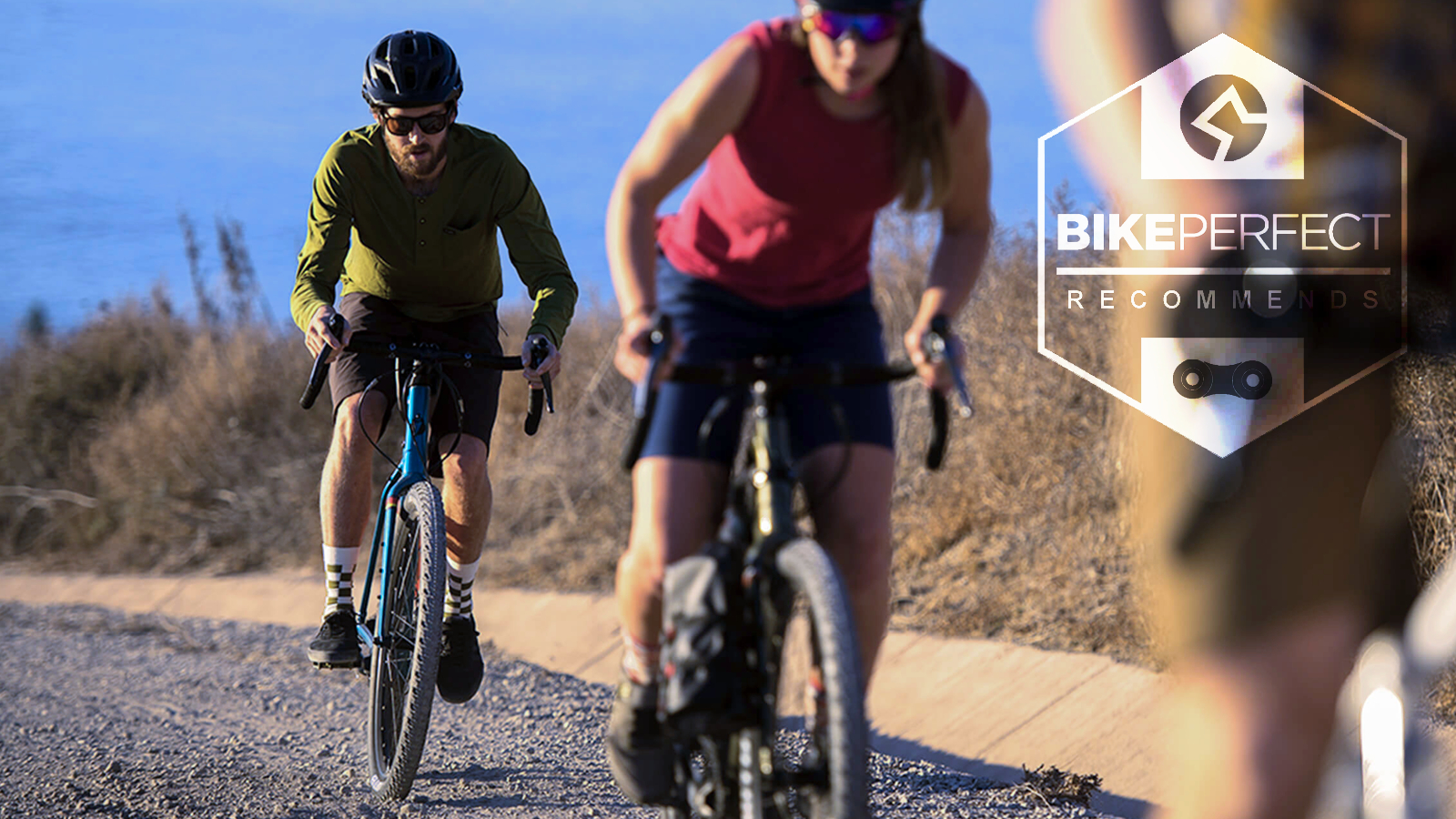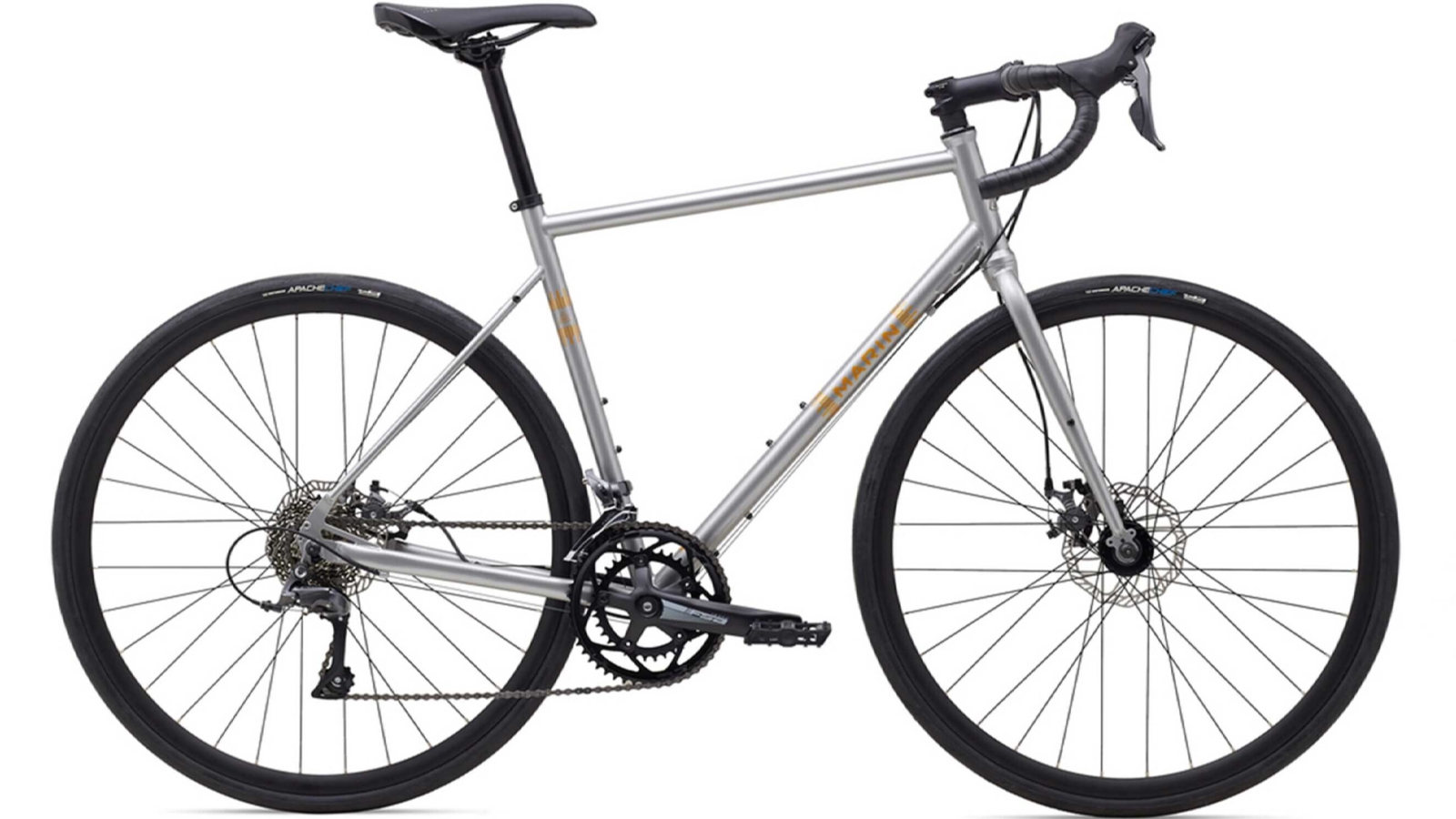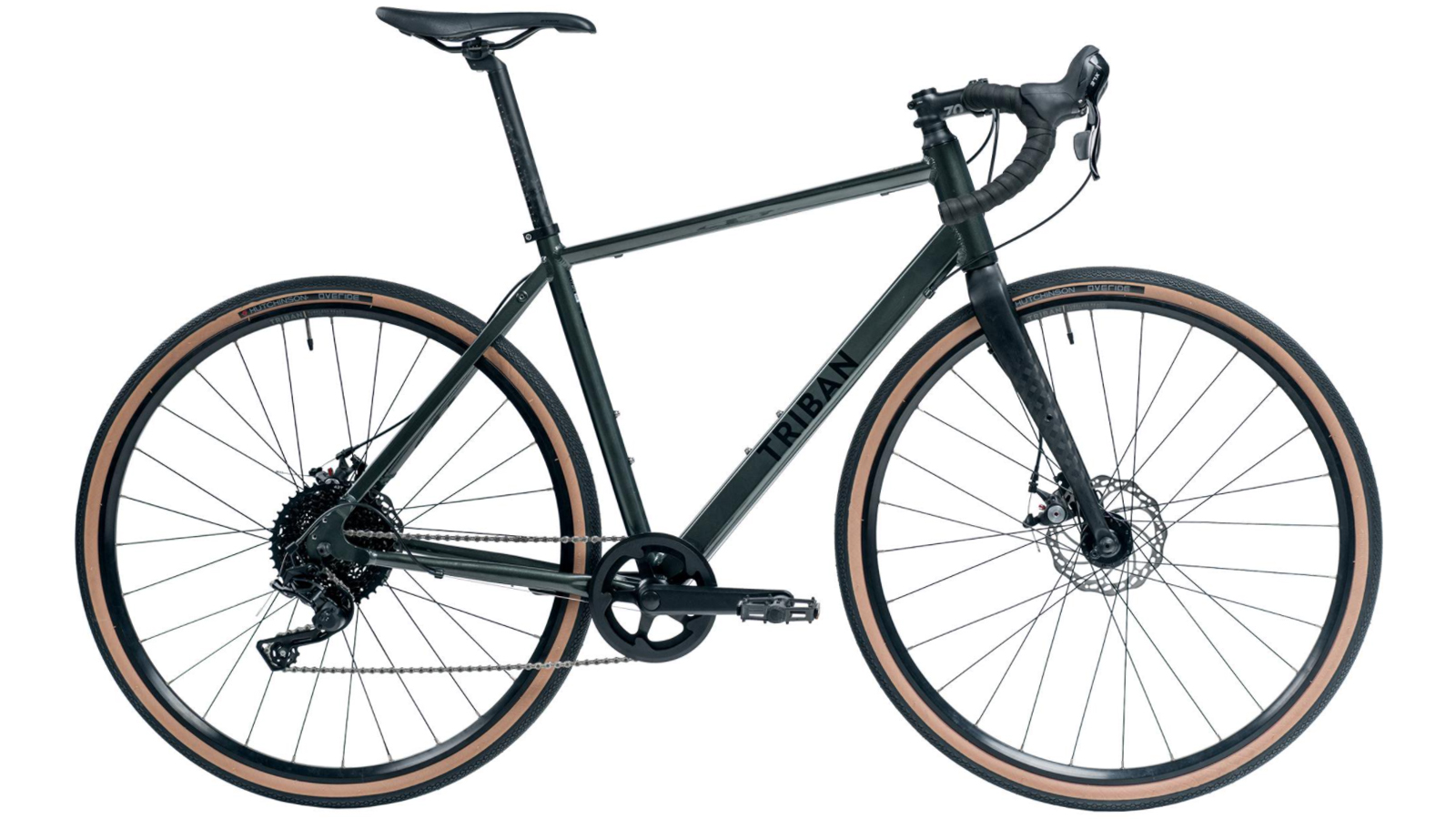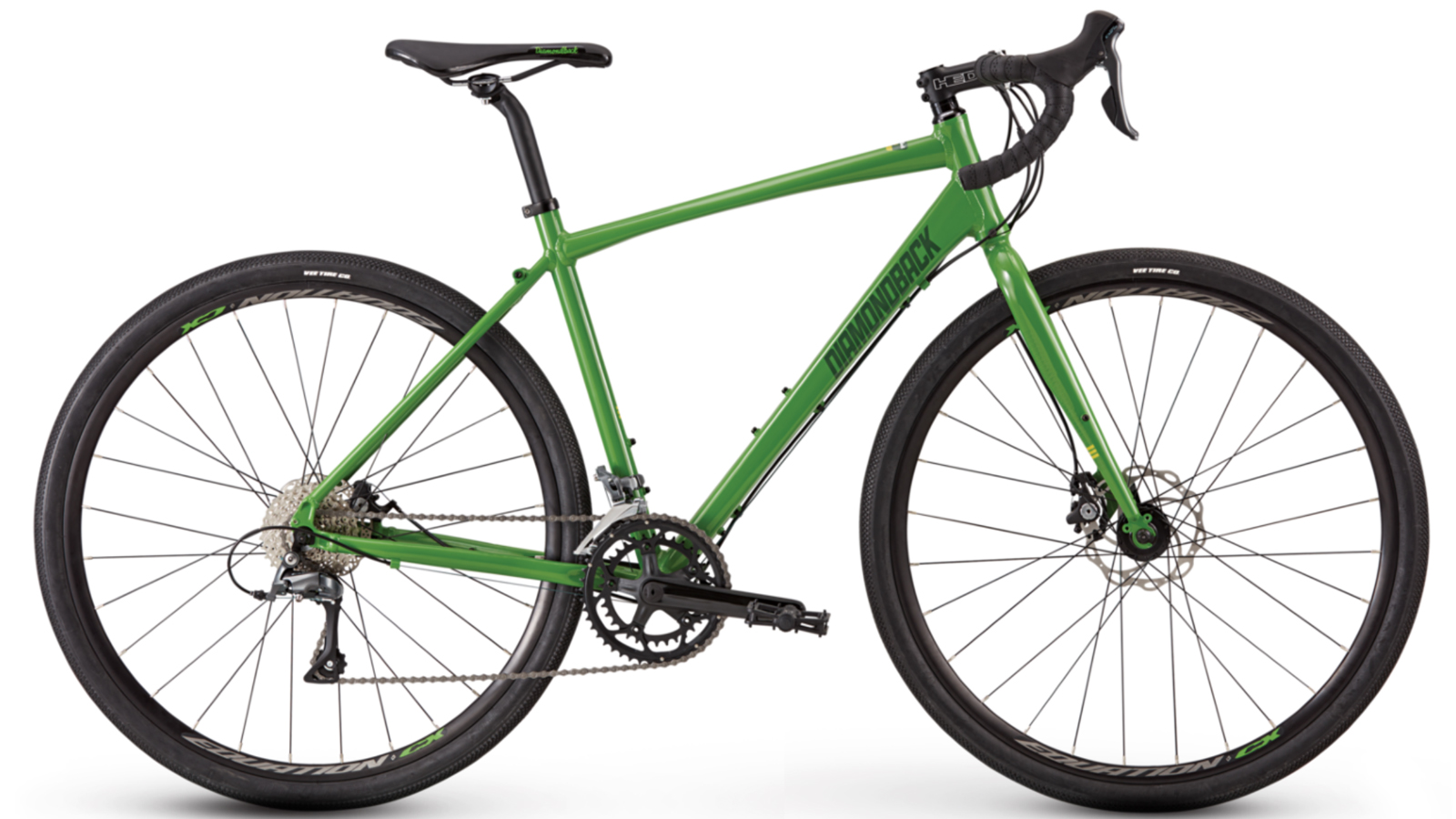
The best gravel bikes under $1,000 mean you don't have to put adventures on hold because of price. The bikes on this list keep prices down with lower-cost materials and less advanced components. Much of the technology in use at these price points was a lot more expensive just a few years ago. Now it's trickling down from the best gravel bikes as new technologies push older tech out of more expensive offerings. That means for not a lot of money you have the opportunity to swing your leg over an amazing bike. You can take that brand new gravel bike and combine it with some of our tips for bikepacking on a budget for unforgettable memories.
If bikepacking isn't your thing, you might also want to take advantage of the explosion of the gravel cycling genre for your next everything bike. Gravel bikes make some of the best all-around bikes. They are workable for a huge range of different types of cycling and lots of interest in the genre means lots of options with lower prices. Pick up a great inexpensive bike to get you started then add a set of the best gravel bike tires tailored to whatever you want to do.
The point is that you have tons of options and none of it has to cost a lot of money. If you need some idea of how to choose the best gravel bike under $1,000 then jump down to the bottom. If you have an idea of what you want and just want to see our choices then keep scrolling.
Best gravel bikes under $1,000
Why trust BikePerfect

Specifications
Reasons to buy
Reasons to avoid
On the road or out on the trail the Voodoo Limba feels way more premium than its price tag would suggest, and this is thanks to its totally sorted contact points. Add in the feel of quality bar tape and it's easy to mistake the Limba for a bike of twice it's value.
The advanced looking aluminium frame is pared with a chromoly-steel fork, and while this does translate to a good ride feel, the flipside of the fork is that steel certainly doesn't help things in the weight department.
As standard, the Limba's gearing range is more suited to urban environments as opposed big elevation rides in the wilderness, but luckily the long-cage Shimano Claris gears have enough span to upgrade to a 11-34t cassette should you be heading to the hills.
Rack mounts at the rear and proper threaded mudguard mounts at both ends add to the Limba's usability and make it a brilliant option for riders wanting a great value all-weather commuter or tourer. Voodoo only offers the S, M and L sizes though so riders at either height extremities should probably keep scrolling.
Think this could be the right gravel bike for you? Then make sure to check out our Voodoo Limba review for more details.

Vitus Substance 2 Microshift
Specifications
Reasons to buy
Reasons to avoid
Vitus have built a reputation for bikes that perform very well but come with a highly competitive price tag. Their Substance range of gravel bikes is testament to this and their entry level model, the Substance 2 Microshift, is no exception.
The aluminium frame is the same one used right through the Substance range and appears on bikes costing much more than twice the price. This is combined with a carbon fork, which is much lighter than the metal versions you'll find on some other bikes in this guide.
Overall component spec is decent for the money too. At the heart of the bike is a 2x8 Microshift drivetrain, while the brakes come in the form of cable pull Tektro MD-C310 discs with 160mm rotors front and rear. Mounts for bags, twin bottles and mudguards make the frame is a good option for bikepacking, though the Vee Rail Sport tires are better on dry hardpack rather than true off-road conditions.

Kona Rove AL 650
Specifications
Reasons to buy
Reasons to avoid
Gravel bikes are often accused of just being hardtail mountain bikes from the 1990s; the Kona Rove AL 650 exemplifies this to a ‘T’. Rolling on 650b wheels and 47mm WTB Venture comp tires, this entry-level shredder is ready for wild adventures. Butted 6061 aluminum makes up both the frame and the fork and the geometry isn’t overly aggressive for added stability when the terrain gets rough.
Spinning the gears is a 2x Shimano Claris eight-speed drivetrain, though notably missing is a clutched rear derailleur, so dropped chains are a possibility. Keeping your speed in check with a one-finger lever squeeze are cable-actuated Hayes CX disc brakes and 160mm rotors front and rear. The Rove AL is also available as a larger wheeled 700c version.

Marin Nicasio
Specifications
Reasons to buy
Reasons to avoid
Marin bikes come with a rich mountain biking and off-roading heritage. The Nicasio is the brand's entry-level gravel model and comes with a 2x8-speed Shimano Claris drivetrain, Promax mechanical disc brakes, and an all-steel frame and fork. Although steel weighs more than aluminum and carbon, that weight penalty might be worth the sacrifice.
Steel is generally a more compliant material and makes a great option for gravel frames. If things really go sideways, steel is also easily repairable. Although the stock build includes only 30mm tires the frame will accept up to 40mm in 700c as well as 650b wheels.

Decathlon Triban RC 120 Disc
Specifications
Reasons to buy
Reasons to avoid
1x10 gearing is a premium option and the Decathlon Triban RC120 Disc including it is impressive at such a low price. The brand manages it by swapping better known brands SRAM or Shimano for budget minded Microshift. Despite less name recognition Microshift makes high quality components that retain Shimano compatibility.
The front chainring is a 38T unit that paired with an 11-42T cassette means you've got tons of range for steep, slippery, gravel climbing. When you make it to the top, the carbon fork should help smooth the descent. The only spec that gives pause is a max 38mm tire but at this price it's probably a sacrifice that's palatable.

Diamondback Haanjo 2
Specifications
Reasons to buy
Reasons to avoid
The Diamondback Haanjo 2 is gravel capable but it's also designed to be a do-it-all bike. Diamondback understands that not everyone has the funds, or space, to own a quiver of bikes each tailored to a specific use. The Haanjo 2 is an inexpensive option for road riding, commuting, touring and off-road stints. The aluminum frame adds a steel fork for more comfort and includes mounting points for fenders.
For the drivetrain, the Haanjo 2 uses Shimano Claris 2x8-speed with Tektro Lyra mechanical disc brakes. Fitted from the factory are 40mm Vee Rubber Speedster tires providing plenty of capability however you use the bike.

Mongoose Elroy
Specifications
Reasons to buy
Reasons to avoid
A full bike at this price range is impossible to compare in standard metrics. It's so inexpensive that you have to expect cost-cutting. That said, there's a lot to like about what's included. Out of the box you get an included front rack, an included frame bag, and five water bottle mounts. There's nothing stopping you from taking a brand-new bike, that costs less than wheels on high-end options, and immediately hitting the trails with everything you need for a weekend of bikepacking.
There's no doubt it's heavy and the 34/48T front and the 11-32T rear gearing will mean you'll want to stick to the flats but the Elroy is entirely workable off-road or around town.
How to choose the best gravel bike under $1,000
What size wheels is best?
Depending on what side of the cycling world you are coming to gravel cycling from, this might be a strange topic. Road bikes are almost exclusively 700c. On the mountain bike side of the fence different wheel sizes are a common debate with advocates on both sides. Our 27.5 vs 29in wheels feature might be worth a quick read, because when it comes to gravel bikes there are a lot of similarities.
Choosing between 650b and 700c wheels and tires on a gravel bike is a common decision. The basic outline is that smaller wheels with bigger tires mean more traction and a more comfortable ride. Larger wheels with smaller tires sacrifice volume but make for a faster-rolling bike. Fortunately, in most cases, the choice is not final at the time of purchase.
The smaller 650b wheel and larger tire will end up being about the same overall diameter as the larger 700c combination. That keeps fitment and geometry about the same and means you can typically swap back and forth. Gravel bikes are excellent all-around bikes and it's common to have two pairs of wheels so that you can quickly be ready for different situations.
When you are looking for a bike to buy, choose wheel size based on your expected use. If you think you'll be doing more off-road riding then look for a 650b bike. If you think you'll be doing more road riding then go for 700c. Just keep in mind that either wheel size will work for anything you want to do and it's not a choice you are stuck with.
How many chainrings do I need?
In many ways, this discussion is the same as the tire size discussion. If you come from road cycling then you'll expect a bike to have two chainrings in the front. If you come from mountain biking then there's more variation but the industry has largely switched to a single chainring. Choosing the best gravel groupset really depends on the riding you plan on doing.
A single chainring up front makes a bike easier to handle over more technical surfaces. Front chainrings need some forethought when switching. It's also best not to fully cross the chain between the front and the back of the bike. That means a bike with two chainrings will sometimes end up getting caught in the wrong gear if the ride suddenly gets steep and rough. You can't always look down and assess what gear the bike is in and even if you can, changing the front chainring might upset the balance of the bike. Needing to only worry about the rear cassette means you keep your eyes on the road, or trail, and change gears as needed.
The downside of a single chainring is that you've got fewer gears to choose from. Fewer gears but a similar range mean the jumps between gears are bigger. High-end setups solve this problem by adding gears in the rear cassette. At the price point though you aren't going to see 12 or 13 gears in the back. That means, just like with the tire choice you'll have to decide what you think your gravel bike will be doing more of. Off-road use makes a single chainring, or 1x, a better choice. Mixed surface riding makes a double chainring, or 2x, a better choice.
Unlike with wheel size, this choice is slightly more permanent. Many bike frames have provisions for later adding a front derailleur but it's not a small change. You'll need an entire new groupset and it's a somewhat major undertaking. It's not impossible but it's best not to count on changing the groupset anytime soon. The good news is that you can use either 1x or 2x for any riding you want to take on despite the advantages that they give you for different types of riding.
What material should the frame be?
Common frame materials include carbon fiber, aluminum, steel, and titanium. They all have a different ride feel and give a different character to a bike but also, it's not as important as it seems. Where you really start to notice frame material differences is when manufacturers are able to use the inherent properties of a material to tune ride feel.
Carbon in particular benefits from an ability to tune ride feel. Because carbon fiber frames use sheets of carbon fiber laid into a mold in a particular order there's a lot of adjustability. A manufacturer can turn sheets in different directions, or use different types of carbon fiber, in particular areas. That lets them build compliance into a frame in very precise ways. Skilled builders can also use metal to accomplish some of the same goals. At the lower-end price points, there's a lot less of that happening in the frame design.
For a gravel bike under $1,000 it's most likely you are going to find aluminum is the material of choice. Aluminum is easy to work with, stiff, and light. Outside of aluminum, the only other material you might find is steel. A steel frame is repairable if something happens and the ride isn't as stiff. The disadvantage is steel is heavier and adds some extra weight to the bike.
What should the deciding factor be?
Getting a bike to market at this price point is going to mean making some sacrifices. Lower end components and heavier bikes are the sacrifices you'll be making. That in no way means there's not a great bike to be had. Most likely what it means is that you are buying into a starting point.
Whatever bike you decide on is going to, hopefully, be a step along the way in your journey. You can upgrade components over time and customize everything so it fits your riding style. You can even repaint your bike for a new look. That means the most important deciding factor should be fit. If you are trying to decide between two options look for the one with the size and geometry you think is best for you. Next consider fender mounting points. If you are going to ride in the rain you will want mounts for fenders and it's a challenge to work around the lack of mounts later. After that, you'll want to think about 1x or 2x. It's a change you can probably make later but it's a lot easier if you start with what you'd prefer.
Josh Ross was our US tech writer. He's most happy when talking about the finer details of how bicycle parts and components work, and enjoys putting his thoughts to words. He is a road cyclist at heart but can often be found taking the gravel road less traveled. Although he rarely races these days, he still enjoys a good Zwift session and race but will always choose the real world over pixels.
Height: 5'9"
Weight: 137 lb.
- Rich OwenEditor, BikePerfect

